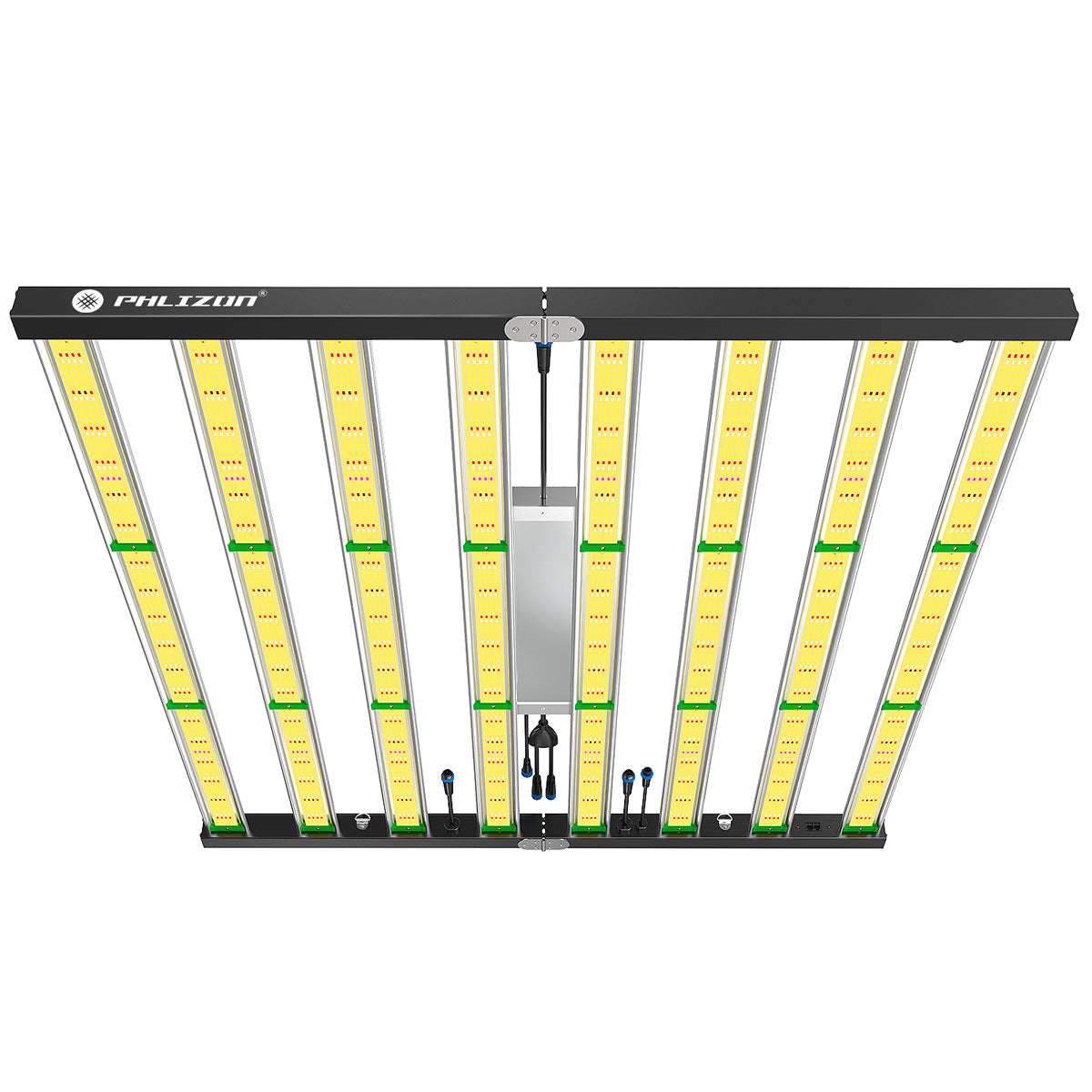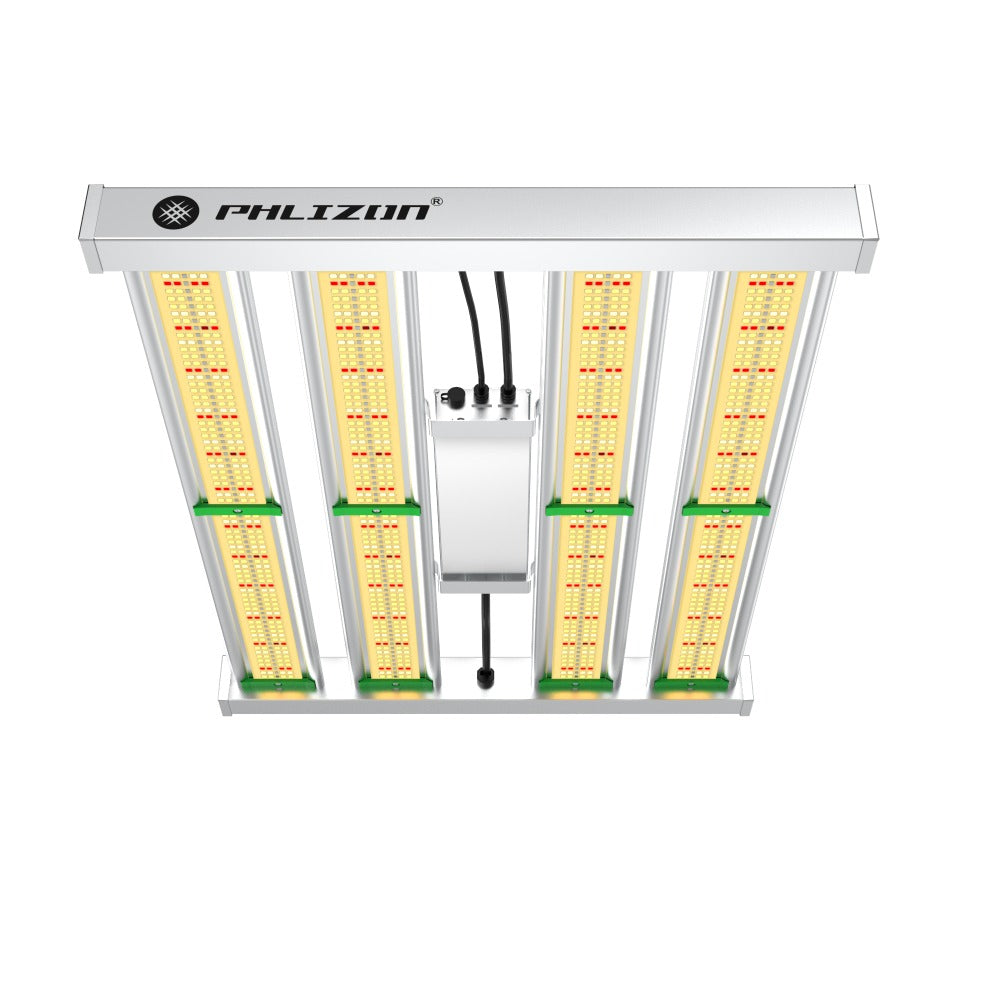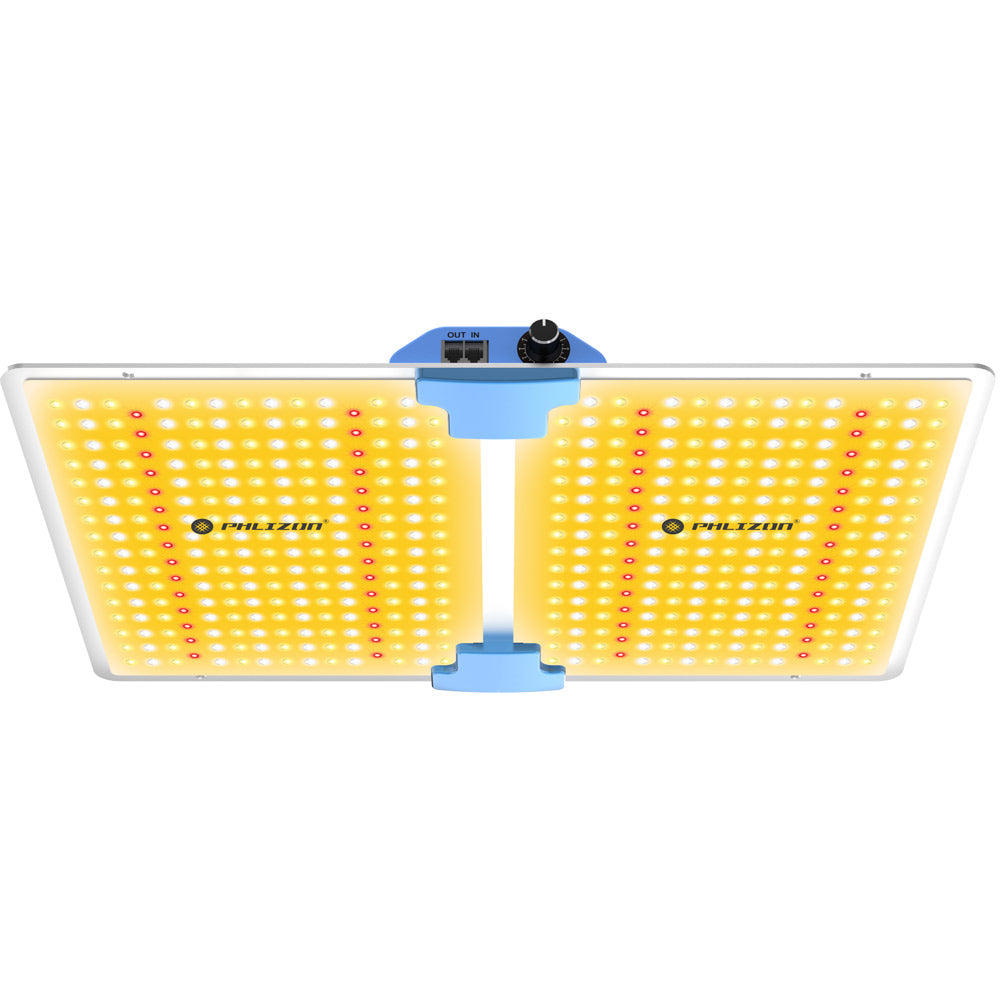Menu
How Does Blue Light Affect Plant Growth
Blue light, with wavelengths between 400 and 500 nanometers, is a critical component of the visible light spectrum that significantly influences plant growth and development. This waveband, characterized by relatively high energy, drives various physiological processes in plants, from photosynthesis to morphological changes. Below, we explore the multifaceted effects of blue light on plants, drawing from detailed insights into its role in vegetative growth, flowering, and overall plant health.
Blue Light and Photosynthesis
Blue light is highly absorbed by both chlorophyll a and b, as well as intact leaf systems. It provides chlorophyll production, the most active pigment for photosynthesis, enabling plants to convert light energy into chemical energy. Plants that receive plenty of blue light will have strong, durable, and healthy stems and leaves. The 400-500 nm wavelength range is particularly effective in supporting stem and green leaf development. Blue light fits with the absorption peak of chlorophyll, making it critical for producing sugars and carbons essential for growth.
Blue light also regulates the opening and closing of stomata, the tiny pores on leaves that control gas exchange and water loss. The quantity of blue light determines how far plants open their stomata; high levels cause wider openings, accelerating metabolism and, by extension, plant growth and development. Generally, only a low intensity of blue is needed in a light spectrum for fully functional photosynthesis. However, blue photons are less efficient than red or green photons in driving photosynthesis because some of their high energy is lost compared to longer wavelengths.
Morphological Effects of Blue Light
Blue light suppresses extension growth, resulting in plants that are usually shorter with smaller, thicker, and darker green leaves compared to those grown without blue light. This compact growth is desirable in ornamental plant production, where blue light can act as a growth regulator. Plants use a photoreceptor called cryptochrome to sense blue light, which dampens the operation of the plant hormone auxin. This hormone is responsible for stem growth and apical dominance, the phenomenon where growth points prevent buds from forming subsidiary branches. As a result, plants exposed to bluish light often appear squat with a robust structure and more side stems due to diminished apical dominance.
In specific species, blue light can increase leaf area. For peppers, cucumbers, and lettuce, adding blue light to the spectrum enhances leaf expansion compared to plants grown under red or broad-spectrum light. This response is attributed to the phot1 photoreceptor, which promotes leaf expansion to increase light capture and photosynthesis. However, tomatoes do not show increased leaf area under blue light, though their photosynthetic capacity still improves when grown under a mix of red and blue LEDs.
Blue Light and Flowering
Blue light can regulate flowering through increasing bud size and timing. For cannabis, blue light increases bud size and promotes photosynthesis, enabling plants to accumulate more resources for producing large, dense flowers. High-intensity blue light can promote flowering in long-day plants and inhibit it in short-day plants, while low-intensity blue light typically does not affect flowering in most day-length-sensitive crops. At the end of the flower cycle, some growers increase blue light exposure dramatically for the final three to seven days. This can potentially increase terpenes by 50% and boost cannabinoids, enhancing the potency, fragrance, and taste of crops like cannabis, which may develop distinct flavors such as berry, mint, or pine.
Species-Specific Responses
The effects of blue light are species-dependent. Lettuce is highly sensitive, with an optimum dry weight and leaf area at about 6% blue light, though results can be complicated by lamp type. Wheat and soybeans are less sensitive, with dry mass and leaf area decreasing steadily with increasing blue light. In cucumbers, blue light reduces plant height, hypocotyl length, and epicotyl length, while red light improves these parameters. Blue light causes cucumber stems to grow thicker, accelerating water and nutrient transmission, but it may result in lower fresh weight of above-ground parts due to reduced light conversion efficiency by carotenoids.
Blue Light in Indoor and Greenhouse Settings
In indoor lighting, such as vertical farming, and greenhouse supplemental lighting, blue light is typically included to ensure normal plant growth. Full-spectrum LED grow lights, which include blue light in the PAR (Photosynthetically Active Radiation) range, are common because they improve photosynthesis and balance plant growth. Research shows that blue and red light absorption by plants can reach up to 90%. Customizable LED grow lights, like SANSI’s 24W model, offer dimming options and adjustable blue-to-red ratios, allowing growers to tailor light to specific plant needs and growth phases. For houseplants, blue light supplementation can address deficiencies, such as leggy growth or loss of green color in leaves, which indicate insufficient blue light.
View our products:
- https://www.phlizonstore.com/collections/all-products
- https://www.phlizonstore.com/collections/shop-by-collection
- https://www.phlizonstore.com/collections/qb-grow-lights
- https://www.phlizonstore.com/collections/grow-light-with-uv-ir-led
Potential Drawbacks and Considerations
While blue light is essential, excessive amounts can reduce the Photosynthetic Photon Flux Density (PPFD) of crops, potentially harming plants. High ratios of blue light may also promote algae growth in aquatic settings, particularly if nutrient levels are imbalanced. Growers must research light recipes specific to their plants to avoid overexposure. Combining blue light with red and other wavelengths is recommended to optimize growth, as sole blue light may cause morphological effects that deviate from typical growth patterns, such as increased plant height in cucumbers under sole blue LEDs.
FAQs
Why do plants need blue light?
Blue light is crucial for chlorophyll production, stomatal regulation, and photosynthesis, promoting strong stems, healthy leaves, and compact growth. It also influences flowering and nutrient uptake in various plants.
Can too much blue light harm plants?
Yes, excessive blue light can reduce photosynthetic efficiency and PPFD, potentially stunting growth or causing imbalances. It’s best to balance blue light with red and other wavelengths for optimal results.
How does blue light compare to red light for plant growth?
Blue light supports vegetative growth, strong roots, and leaf development, while red light enhances flowering, fruiting, and stem elongation. A combination of both, often in a 1:5 blue-to-red ratio, is ideal for most plants.
Is blue light necessary for indoor plants?
Indoor plants often lack sufficient blue light, especially if grown away from windows. Supplementing with blue light via LED grow lights ensures healthy growth and prevents issues like leggy stems or pale leaves.
Does blue light affect all plants the same way?
No, the response to blue light varies by species. Lettuce is highly sensitive, showing optimal growth at low blue light levels, while wheat and soybeans are less affected, and cucumbers may exhibit unique morphological changes.
Featured blog
- Choosing a selection results in a full page refresh.

















